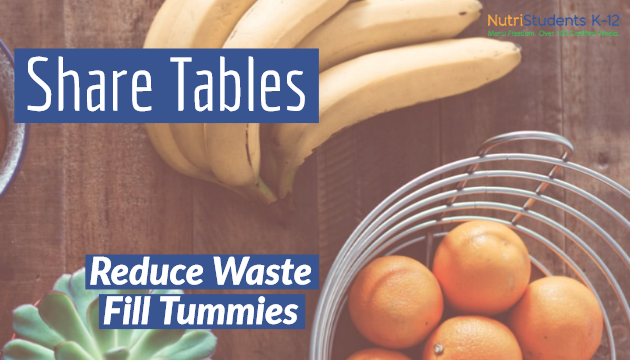
Share Tables Reduce Waste, Satisfy Hungrier Students
Share tables are an excellent way for child nutrition programs to reduce food waste and help hungry kids get their fill. For those times when students’ eyes are bigger than their stomachs, they can place select foods they don’t want on the share table for other students/program participants to eat. Share tables are permitted by the USDA, according to specific guidelines.
Prepackaged, shelf-stable items, such as crackers and granola bars, or whole fruits that must be peeled before eating, like oranges and bananas, are excellent to place on a share table. For food safety reasons, many foods are not allowed to be placed on share tables.
Acceptable Foods:
Unacceptable Foods:
If your school or care program offers a share table, and we recommend everyone does, someone must monitor the table to ensure only acceptable foods are exchanged through the table and the share table must be accounted for in your HACCP plan.
Food remaining on the share table at the end of meal service may not need to be thrown away. They may be served and claimed for reimbursement during another meal service (i.e., during an afterschool program when leftover from a school lunch); and/or donated to a nonprofit organization, such as a community food bank. (see USDA memo: Guidance on the Food Donation Program in Child Nutrition Programs, http://www.fns.usda.gov/sites/default/files/SP11_CACFP05_SFSP07-2012os.pdf).
For more information, see:
“Share Table Guidance for Schools” from the Minnesota Department of Education
“Use of Share Tables in Child Nutrition Programs” USDA Policy Memo